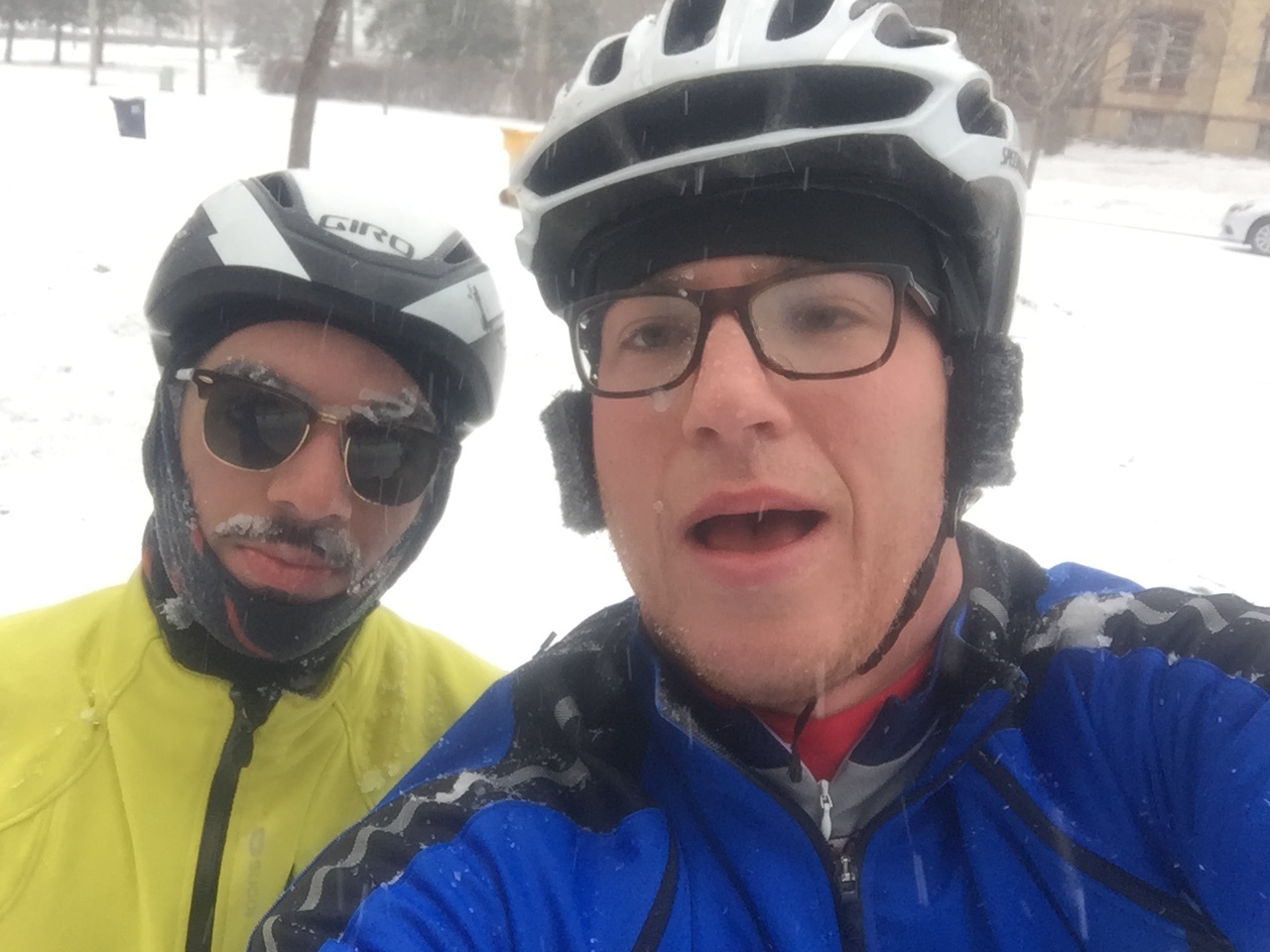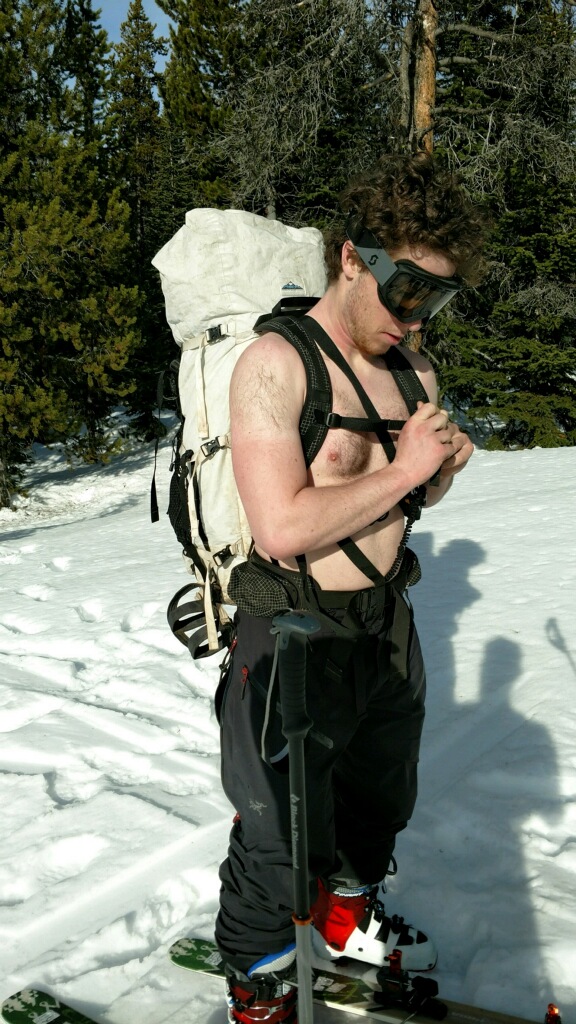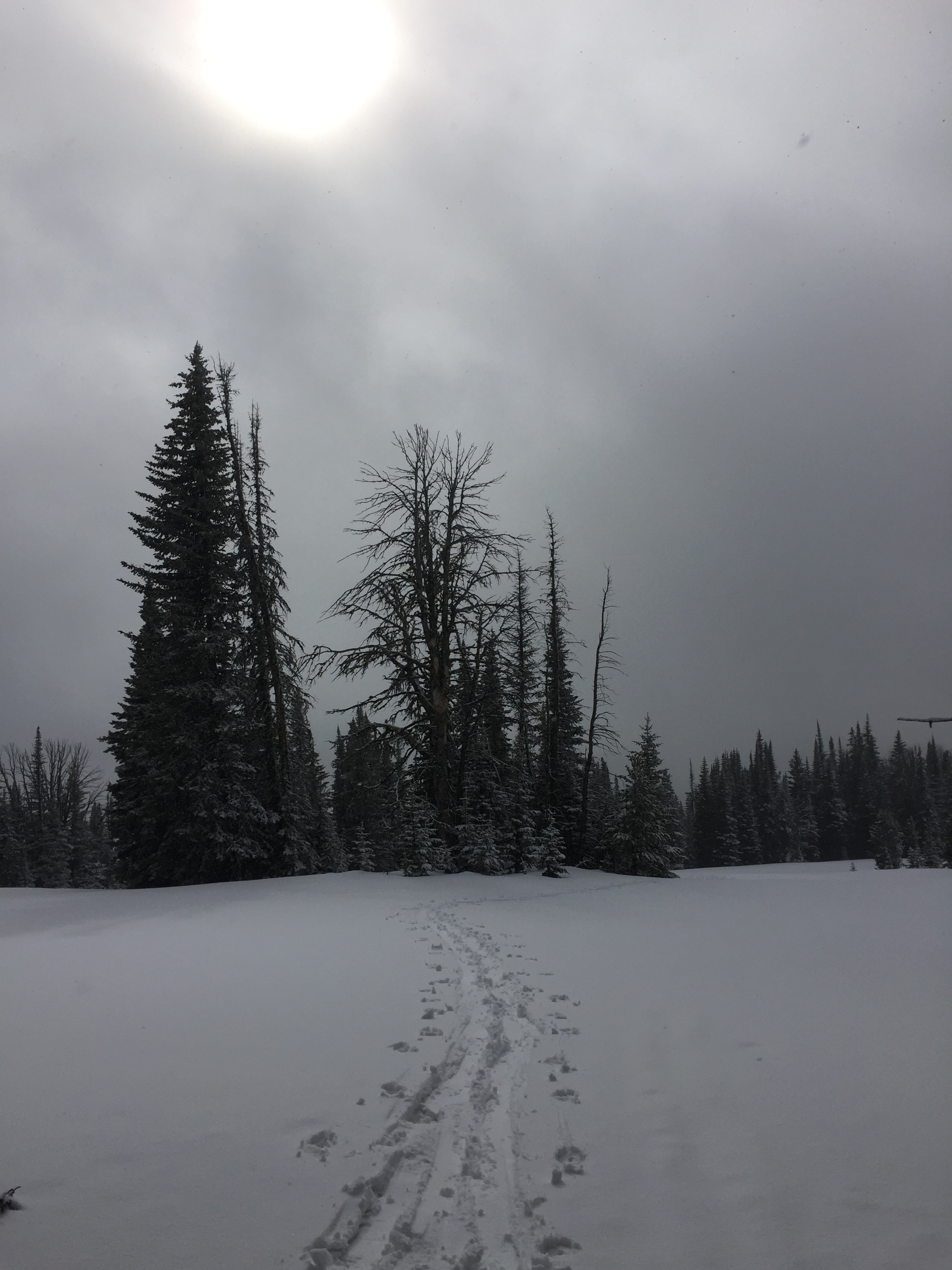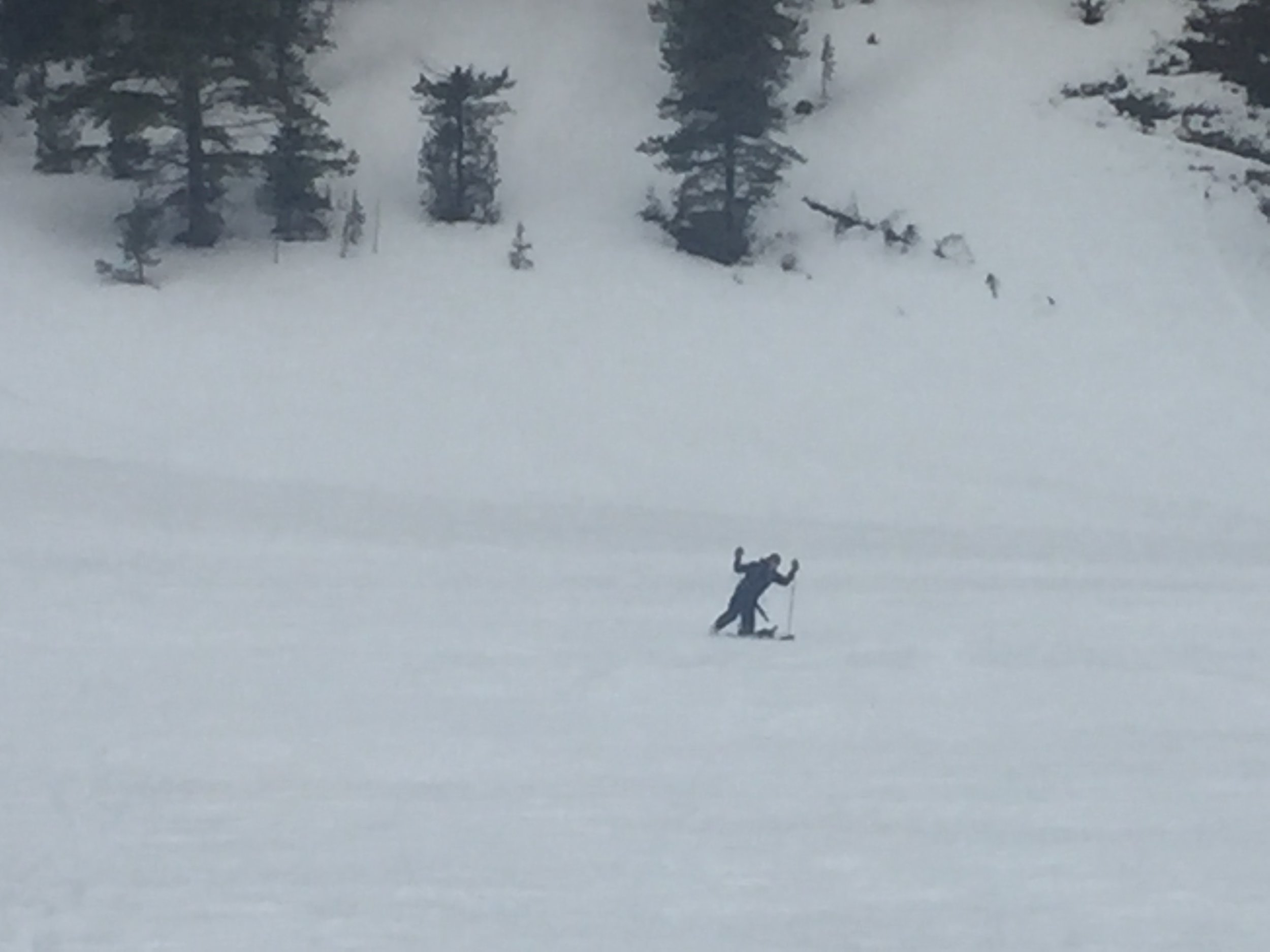Climb the Tree, Take the Ride
There is an easy chair on a national forest service road just outside Bend, Oregon. I am not sure how long it has been there. I hadn’t seen it over the last few days and it certainly isn’t hidden, but it might well have been there a day or a year. Across the road from the homeless guy who’s been living at this trail head for 15 years, there is a big, white easy chair. Not the kind that someone just throws into their car. This is a real, bona fide Easy Chair. It is an easy chair like Easy Rider was a movie about how nice and simple and comfortable motorcycles and the 60’s were. It is a chair with its own gravity. It is cut from a perfect square of marble – a special kind of marble that comes with dirt stains and deformed cushions. It is not set down with respect to anything. It does not face the road. It does not face away from the road. It does not face a tent. It does not face the sunset or sunrise.[1]
Various cars have come to my little corner of public land in the last few days. I’ve seen the beer-swilling teenage hooligans, who left a trail of PBR cans in their wake. I’ve seen the Tacomas, laden with Santa Cruz masterworks, come in and out for the day. I’ve seen the civics stay for the night, rolling out the next day, vessels carrying the occupants’ earthly possessions onto the next quiet road. I’ve seen a late model outback with an old man in it, an old man who has been living in his car around here for the last fifteen years. He is obsessed with health food, but does not have air conditioning in his car, or, presumably, health care. He tries to stay alone, but keeps nuts and seeds as company, in his bread at least. The only people he mentioned talking to were cashiers at grocery stores. I do not understand him.
He told me a few stories; he has had a pretty incredible life. He is a carrier of the wild history of our band of hooligans. He remembers when there weren’t rules or web how to’s for #vanlife. Which is not to say that wild history is one we should try to recreate or yearn for the return of. The Good Old Days were bad for most people. He is one of the few who was able to do what he did and has lived to talk about it.
He is thrown by what the world of adventure has become. He quit riding bikes on roads because they are too crowded. His primary concern is how many people he will have to deal with. He, like most I think, elevates independence and the DIY ethic to the level of religious commandments. He does not seek community, but seems to actively scorn it. I asked if he was a climber. He did not respond. He said he rides mountain bikes, but I didn’t see one. He isn’t living out of his car for sport. He lives in that Outback (and lived in its predecessor) because he wants to.
In the days of increasing crowds, but also increasing enthusiasm and accessibility, new questions and stresses are put upon the spaces we love and the communities we create around them. Crowds and confrontation force us to think more critically about what we are doing and why we are doing it. Why do we climb mountains? Because the climbing is fun? Because it is as out there and inaccessible, as alone as a person can be? How can we best preserve these spaces and maximize our enjoyment?
People have been doing foolhardy things outside forever. We all do what we do because of some voice in our heads that pushes us, be it a devil or angel on the shoulder, but things are different than they used to be. When this guy was 22, he hitchhiked across the country for fun, but it wasn’t in an Even Cowgirls Get the Blues passion for the act of hitchhiking, but because it was a means to see the country.
Yes, the pioneers of our sports, the John Longs, the David Roberts, the Alf Engens, the Lynn Hills and the Yvon Chouinards pursued radical change in their sports, but why did they push the envelope? Chouinard said he went to Patagonia to find adventure. They loved their sports (why did Long write all those books and Chouinard build a forge in the back of his car?), but I’d posit those sports were in service of something else. A feeling and a state of being. The flow of untouched powder, the top-of-the-world weirdness of climbing big walls, the doubt and uncertainty of putting up alpine first ascents in Alaska.
I think that they were in it to feel out there. It was about the climbing, the skiing, the surfing, the boating, the whatever, but in service of adventure, of putting themselves at the end of a very long string.[2]
People make much ado about the exploding popularity of the sports we love, climbing especially. There are more gyms than ever, and more people climbing than ever, more people climbing outside than ever before, and, most importantly, climbers are coming from a far wider cross-section of society than ever before. All great things. The outdoors and adventure are fundamentally transformative, and have given my life meaning. I hope that everyone can have that opportunity. People love the sport of climbing and the sport of skiing.
I think, however, that the reasons people do these dumb things, and what they get out of these activities, has changed wholesale in the last few generations. My generation likes, generally, to be armed with information. We have created and populated Mountain Project, River Brain, Gaia GPS, SPOT, InReach, Strava, Warmshowers and Instagram. We have proliferated our media channels with incredible films, photos and articles about the most far-flung places on earth, with handy guides for getting there ourselves. We know where we are going before we get there. There is no emotional bravery in going somewhere when you’ve seen video from the summit, seen a thousand pictures and talked to a dozen people who’ve done it before you.
Even an afternoon training ride can get a little adventurous once your eyebrows start freezing
Technology has unlocked possibilities previously too stupid to comprehend, but it has also warped the experience of doing it. Much has been written on what Strava has done to running, and I don’t want to come off as a Luddite or curmudgeon, but I think that we should recognize that technology has transformed the outdoor landscape. As we fill in our satellite maps with notes and photographs, we change the experience for ourselves. It robs us of the magic of turning a corner and seeing something that you didn’t know exists, that you didn’t know could exist.
I think that for some the motivations have changed. Things like skiing and climbing have become competitive sports set in scenic places, as unvisited and unknown places on our maps have been ticked off.[3] The stimuli these sports produce in us has changed. The context is different. The sports have become the site of the thrill, not a vehicle towards it. The growth comes in seeing your progression as a climber or skier, not in your forging out into a world unknown to you to subject yourself to the monstrosity and caprice of that world. That world is largely known to us.
Sport certainly has its own transformative power. As a deeply mediocre athlete, I can attest to the beautiful, transcendent moments that pure physical suffering can bring. Often, that suffering redefines whole lives. Walking deep enough into the pain cave changes a person. That experience, though, is different from that of adventure. It is possible to climb very safe 5.13, high-consequence 5.3 or something in between and get something meaningful out of all of it. I do not deny the magic of athletic struggle, but I do think we have lost track of the inherent value of climbing that is not about the moves.
We have come to fetishize ‘harder, faster and longer’ because physical feats are incredibly impressive and recognizable, but this has distracted us from the emotional experience of doing these things. The physical monuments to our emotional journeys seem to have morphed, at least superficially, into the totality of the experience.
It is even possible to have fun when things aren't steep and deep
However surprising it may be, this got me thinking about my degree in Medieval European History. The Byzantine Empire, an Orthodox Christian society, underwent a seismic culture war in the 8th century A.D., called the Iconoclasm. Figures in the Church believed that the religious iconography that adorned many Orthodox churches was becoming the object of people’s worship, rather than a vehicle towards a stronger faith in God.[4] These church leaders argued that icon veneration mislead worshipers and led them to put their faith into representations of holiness rather than the real thing. Worshipers had confused the vehicles of faith with faith itself.
Of course no one has an altar to Fred Beckey in their house, but I think that our community, in attempting to honor, respect and emulate the experiences of our heroes, has come to focus on the technicalities of their feats. How could we possible capture or understand the lightning-in-a-bottle feeling of being the first people to climb El Capitan? We read Muir’s journals and are shocked by his physical feats on Shasta and in Yosemite Valley because we can know that physical experience, but it is so much harder to internalize or communicate his ecstasy swinging on a tree in a storm.
I don’t possess the hubris to think it can be any different; these emotional experiences – a sort of faith – are deeply personal. Just as no one can really explain religious faith to another person, I don’t think we can genuinely communicate our ‘faith’ in the outdoors.
Perhaps this faith has become trite, hackneyed and cliché in its expression, but we should not forget that it exists. If you are seeking the thrill of progression and technical accomplishment, by all means start training to send Project Hard or join the Freeride World Tour.[5]
But if you’re looking to capture that feeling, don’t bog yourself down in the technical. Know before you go, but let it be something new and exciting. Let the weight of history and context and guidance go for a moment, and be there, just you and maybe a little wonder.
It’s just a way to get out there.
[1] That homeless man told me the most irritating thing about living in the West is that the trees are too tall to see the sunsets. “Maybe I should spend some time in the Midwest . . .” he tells me. The grass is always greener I suppose.
[2] Using Chouinard’s definition: “For me, when everything goes wrong – that’s when adventure starts.” (180° South)
[3] I have the utmost respect for those athletes, but they are athletes, not adventurers.
[4] A short introduction to the Iconoclasm: https://www.britannica.com/event/Iconoclastic-Controversy
[5] Of course, it goes without saying that I am not a ‘ripper’








